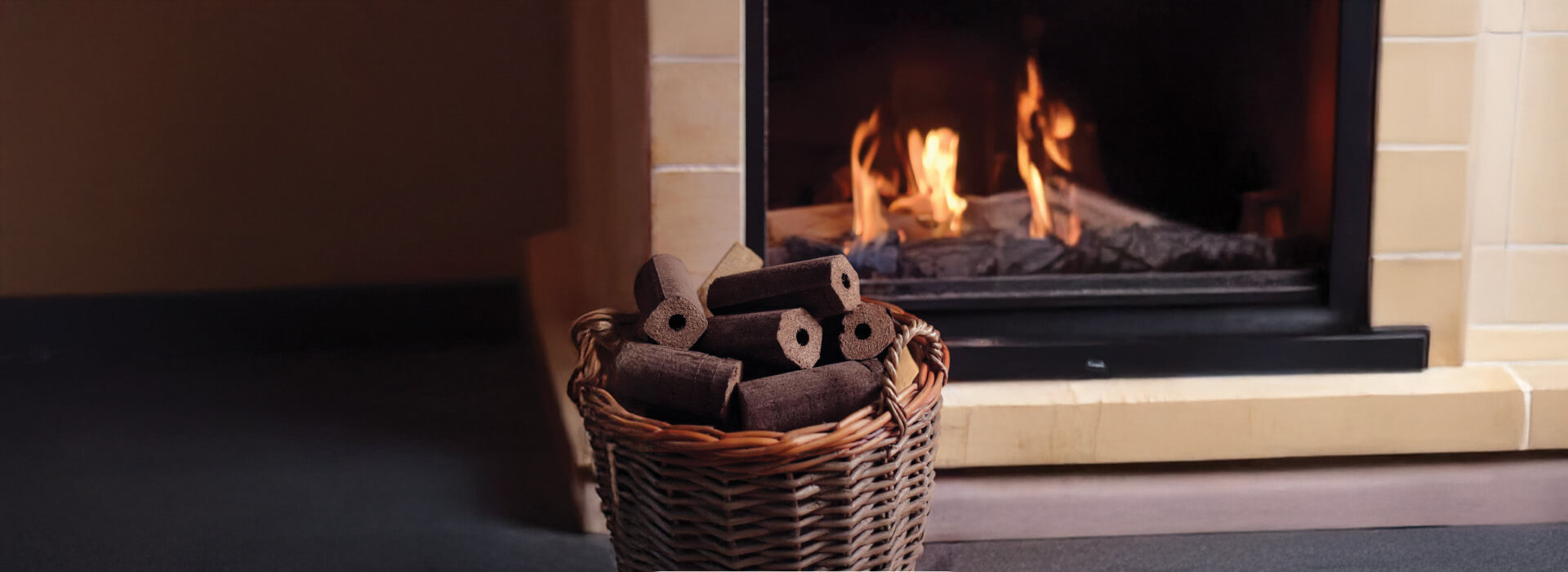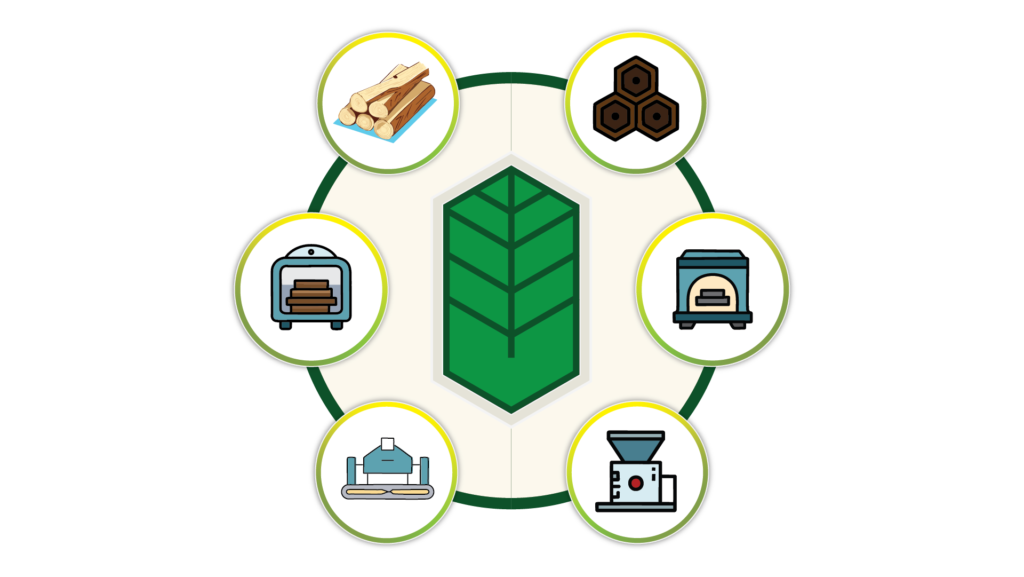
Wood Briquettes
Wood pellets are a sustainable and efficient form of biomass energy, produced by compressing wood chips, sawdust, or other forms of wood waste into small, cylindrical pellets. These pellets are then used as a fuel source for heating, electricity generation, and even as a feedstock for biorefineries. The production of wood pellets is a way to utilize waste products from the forestry and wood processing industries, reducing environmental impact and providing a renewable energy source.
Production Flow

Raw Material
Drying
Grinding
Compression
Cooling and Curing
Finished Product : Wood Briquettes

-
01 - Raw Material
The process begins with the collection of raw materials, which can include wood chips, sawdust, bark, and other wood waste products. These materials are often byproducts of sawmills, carpentry shops, and other wood processing industries.
-
02 - Drying
The collected wood waste is then dried to reduce its moisture content. This is crucial because excess moisture can hinder the binding process and reduce the energy efficiency of the briquettes. Drying can be done naturally or using industrial dryers.
-
03 - Grinding
The dried wood waste is ground into smaller particles to increase the surface area and improve the binding properties. This is typically done using hammer mills or similar equipment.
-
04 - Compression
The mixture is then fed into a briquetting press, where it is subjected to high pressure. The pressure compresses the material, causing it to bind together and form the desired shape and density of the briquette. This can be done using either a piston press or a screw extruder.
-
05 - Cooling and Curing
After compression, the briquettes are allowed to cool and cure. This process helps to stabilize the briquettes and ensures they maintain their shape and structural integrity.
-
06 - Finished Product : Wood Briquettes
Once cooled and cured, the briquettes are often packaged in bags or other containers for easy handling and storage. They are then ready to be distributed and used as fuel.
Get In Touch
Weng Yat Resources Sdn. Bhd.
Headquarters
Lot 751, Jalan Haji Sirat,
42100 Klang, Selangor, Malaysia
Tronoh Factory
Lot 158458, Jalan Bota,
31750 Tronoh, Perak, Malaysia
